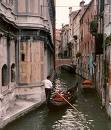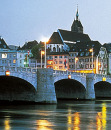 It’s the broad view in the contemporary art world that Venice is all
It’s the broad view in the contemporary art world that Venice is all
 about art (and parties) and Basel is all about money (and parties). Of course, it’s not true — and never has been.
about art (and parties) and Basel is all about money (and parties). Of course, it’s not true — and never has been.
I don’t usually just link to someone else’s articles on Real Clear Arts. But my friend Georgina Adam, Editor-At-Large for The Art Newspaper and columnist for the Financial Times, parsed the differences and similarities between the two so well in an article in the FT on Saturday that I will simply do that. Here’s the link.
If there’s one key paragraph, it’s this:
The “traditional” countries with pavilions in the Giardini tend to show artists who are already well established and have an existing market, so it is inevitable that pieces are sold there. But this year sees new pavilions from Montenegro, Monaco, Gabon, the Comoros and the United Arab Emirates, as well as the chance of finding newcomers from other countries in the 38 collateral events. Many will come from countries without a developed gallery system, and the excitement of the Biennale is this element of discovery. “Biennales are very different from art fairs: they are laboratories,” says Hans Ulrich Obrist, co-director of London’s Serpentine Gallery, who has directed biennales in Berlin, China, Russia and elsewhere. “They are often about process and experimentation.”
As a result, nowadays, Venice shows much more video and installations; Basel offers much more painting and sculpture, pieces people can more easily buy.
